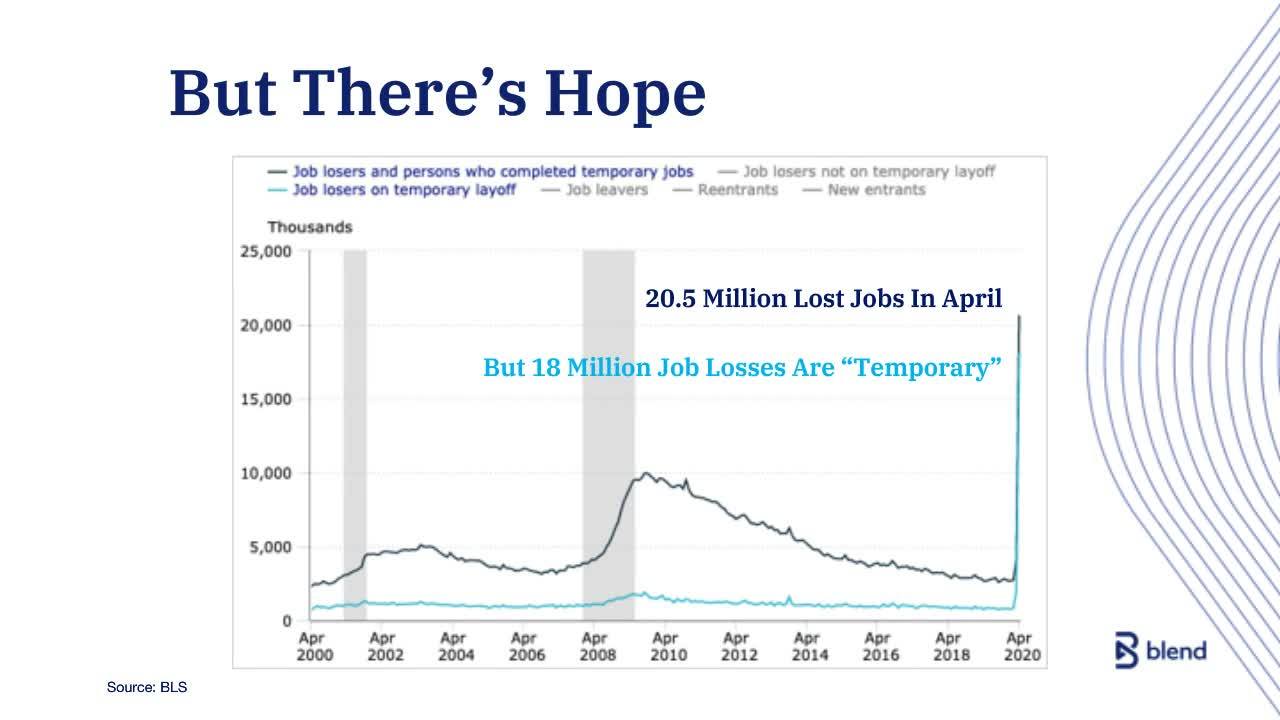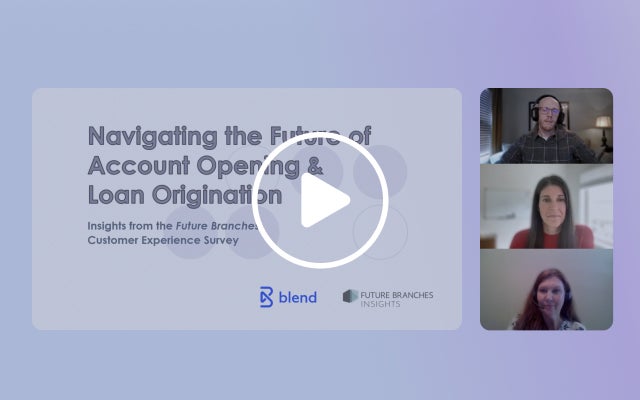May 26, 2020 in Thought leadership
Webinar: Finding digital success in a COVID economy

In a continued attempt to bring you the insights that can help navigate a path forward, we were happy to have Blend’s Van Vaziri join Julian Hebron of The Basis Point for this Future Branches webinar titled “Can incumbents compete with challenger banks in COVID economy?”
Although the two focused primarily on the pressing need for increased digital engagement mechanisms, Vaziri and Hebron also talked through core challenges lenders are facing and a few partnership-enabled pathways to success.

Too busy to watch? Download the executive summary here
Three signposts on the path forward for lending in a COVID economy
The complexity of the current lending landscape figured prominently throughout Vaziri and Hebron’s conversation. From changed consumer behaviors, to forbearance mitigation, to the new digital challenges that must be met soon, lenders are tasked with a laundry list of challenges and opportunities. Keep your eyes on these three key focal points that we’ve identified from the webinar.
1. How COVID economy is changing consumer payments behavior
Digital payments are skyrocketing. Across PayPal’s suite of payments services, there were 7.4 million new active users in April 2020, compared with between 3-4 million new active users in each of the previous 3 months.
Although the reasons for this are not entirely clear, some hypotheses seem likely. Not only are consumers missing out on the opportunity to visit banks to facilitate transactions as they would have in the past, but the retailers they engage with are also increasingly requiring contactless payments, all leading to increased adoption of digital payments accounts.
One additional potential rationale for the large jump in new users is an anecdotal increase in adoption by older generations, who are being forced to accelerate their digital transformation much like the lenders around them.
2. A forbearance bottleneck on the horizon
According to statistics presented in the webinar from the MBA, 8% of American mortgages were in forbearance as of early May 2020. Lenders’ responses to support the initial forbearance processing of these loans has been strong, if we take average call center times of ~8 minutes during this time as a proxy.
However, the need for loan modifications lies just around the corner, and with it, the complex conversations needed to agree to terms. Hebron suggests that these calls can last for ~30 minutes on average and may require up to 5 calls in order to finalize all details. Extrapolate that to the 8% of loans in forbearance, and the cause for concern becomes clear.
One potential step to take is to budget additional call center resources for the coming months, in anticipation of this increased volume. Another step is to conduct special training sessions covering your institution’s approach to modifications, in order to facilitate these interactions. Finally, lenders can look to digital technology to support this process — some lending platform providers are offering self-serve loan modification functionality in response to the current influx.
3. Taking lessons from digital-first lenders and partnering to implement them
Because so-called challenger banks are typically designed to be digital-first operations (and in many cases, mobile-first), they are particularly well-placed to serve the needs of lenders given the requirements COVID economy social distancing. If you happen to fall into this camp, congratulations — you may be one step ahead.
If, however, you support a more traditional organization, the opportunity here is to observe and adapt. As Hebron mentions, incumbent providers are actually very well positioned to continue their success because of the solid foundation on which they are built. Implementing digital experiences onto this core bridges the gap between historic practices and new necessities.
As incumbent lenders look to make this transition in earnest, Hebron suggests that a partnership model is ideal. Lenders can continue developing the supporting base while partners provide the technology that enables a newfound digital agility.
Find out what we're up to!
Subscribe to get Blend news, customer stories, events, and industry insights.


